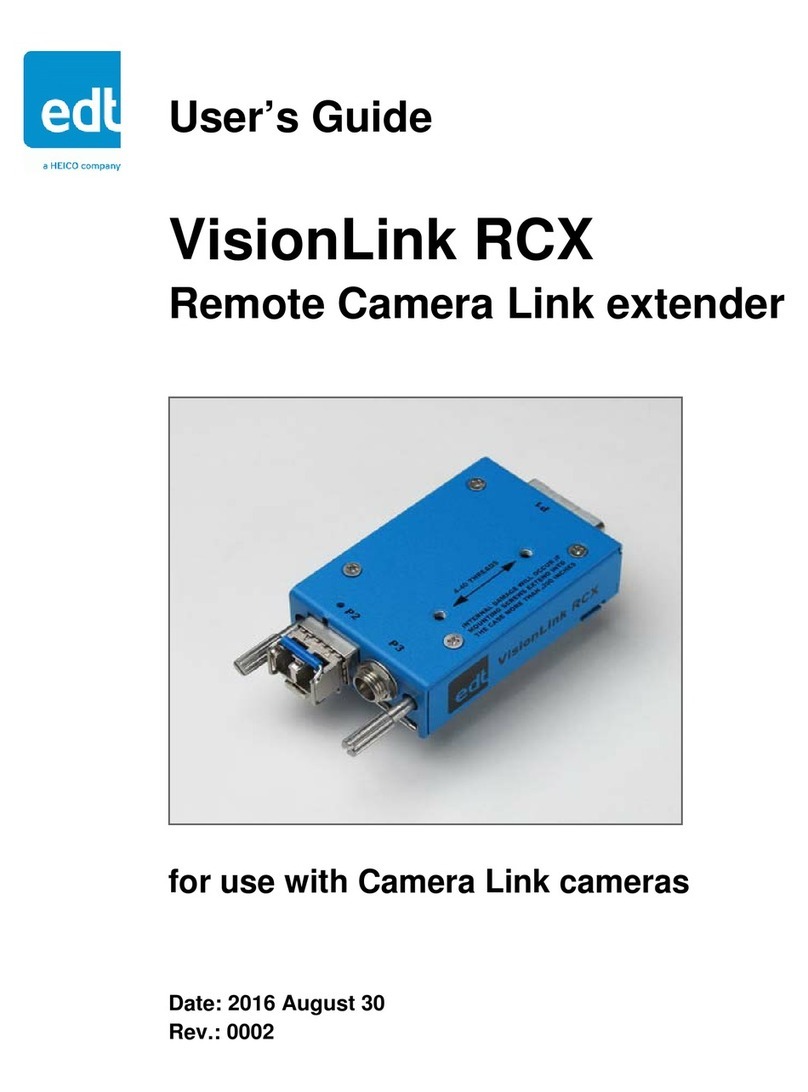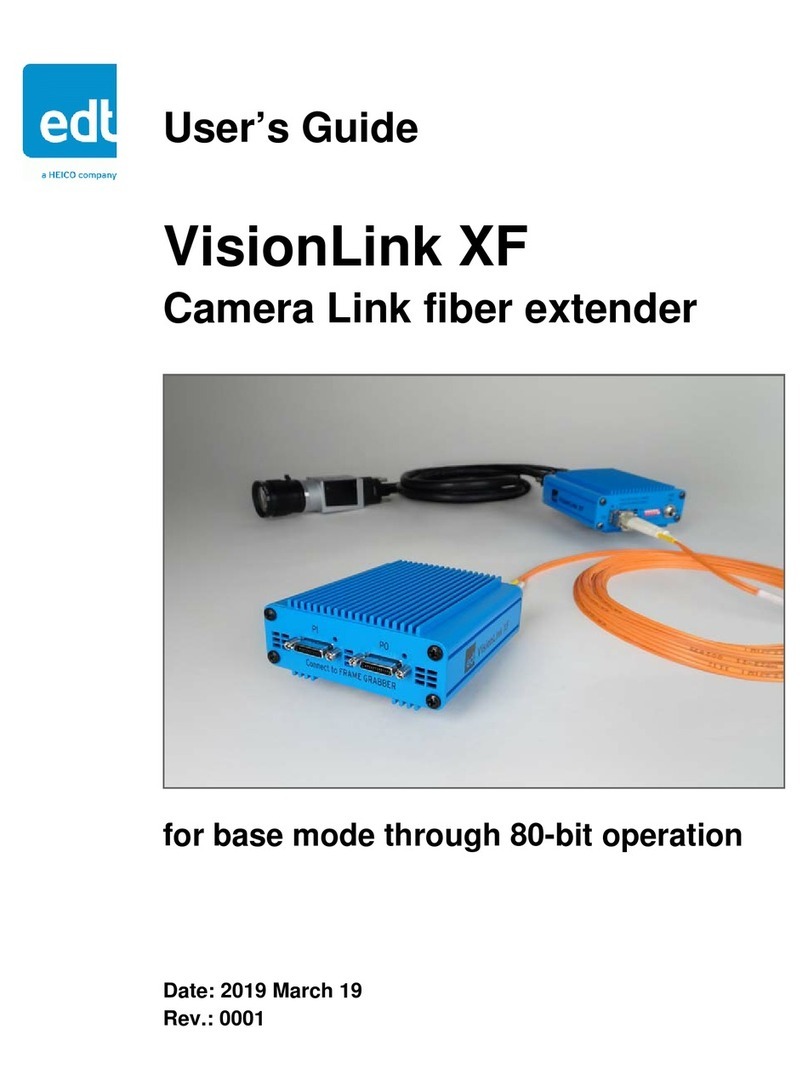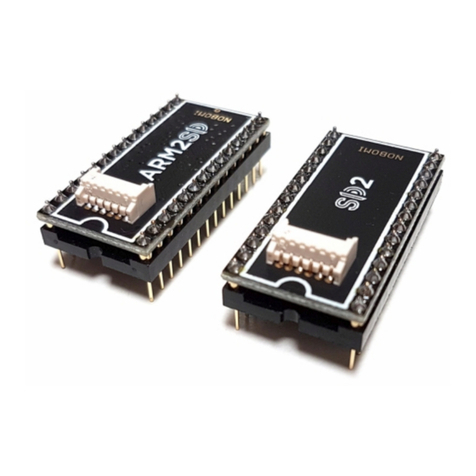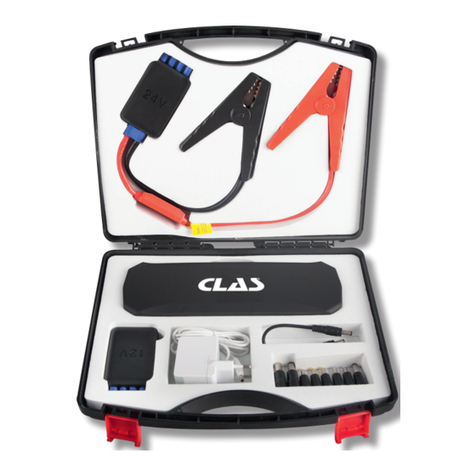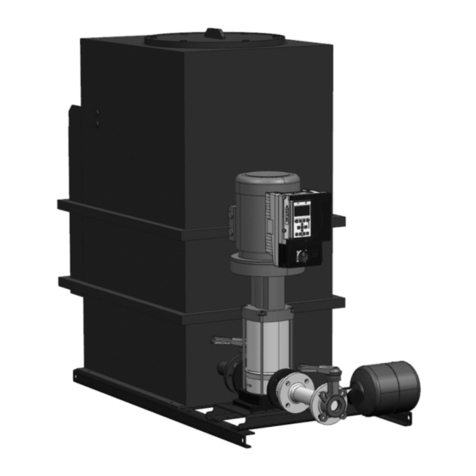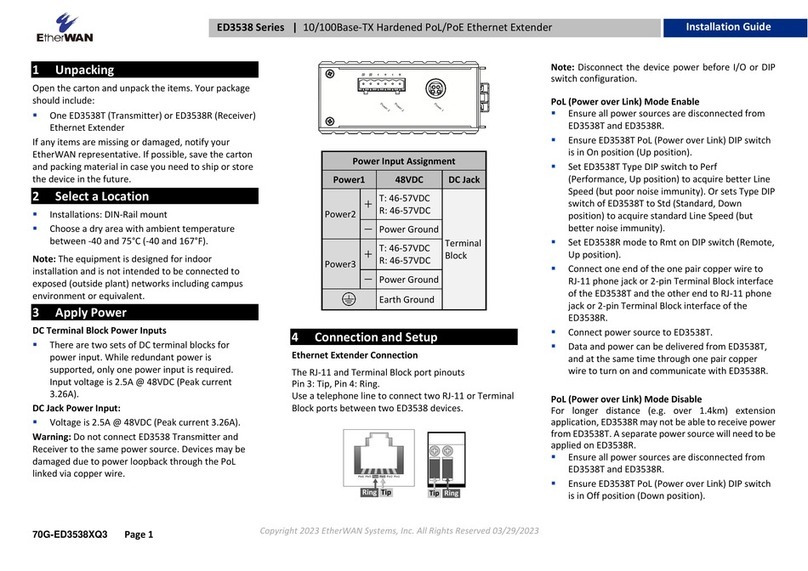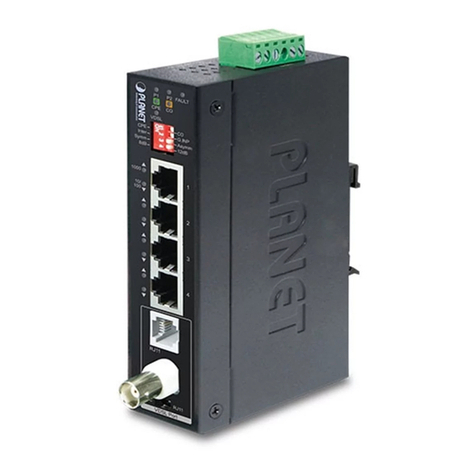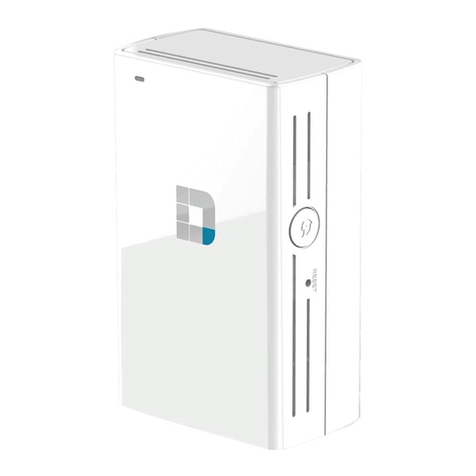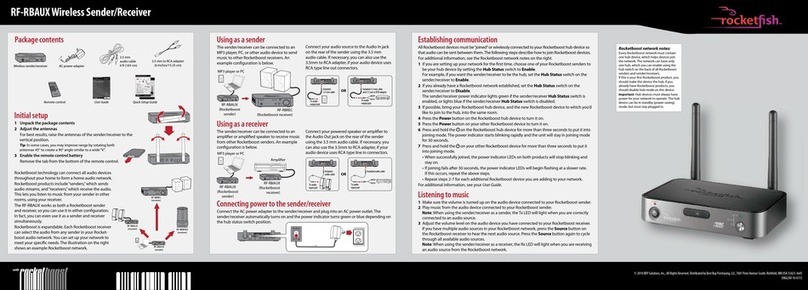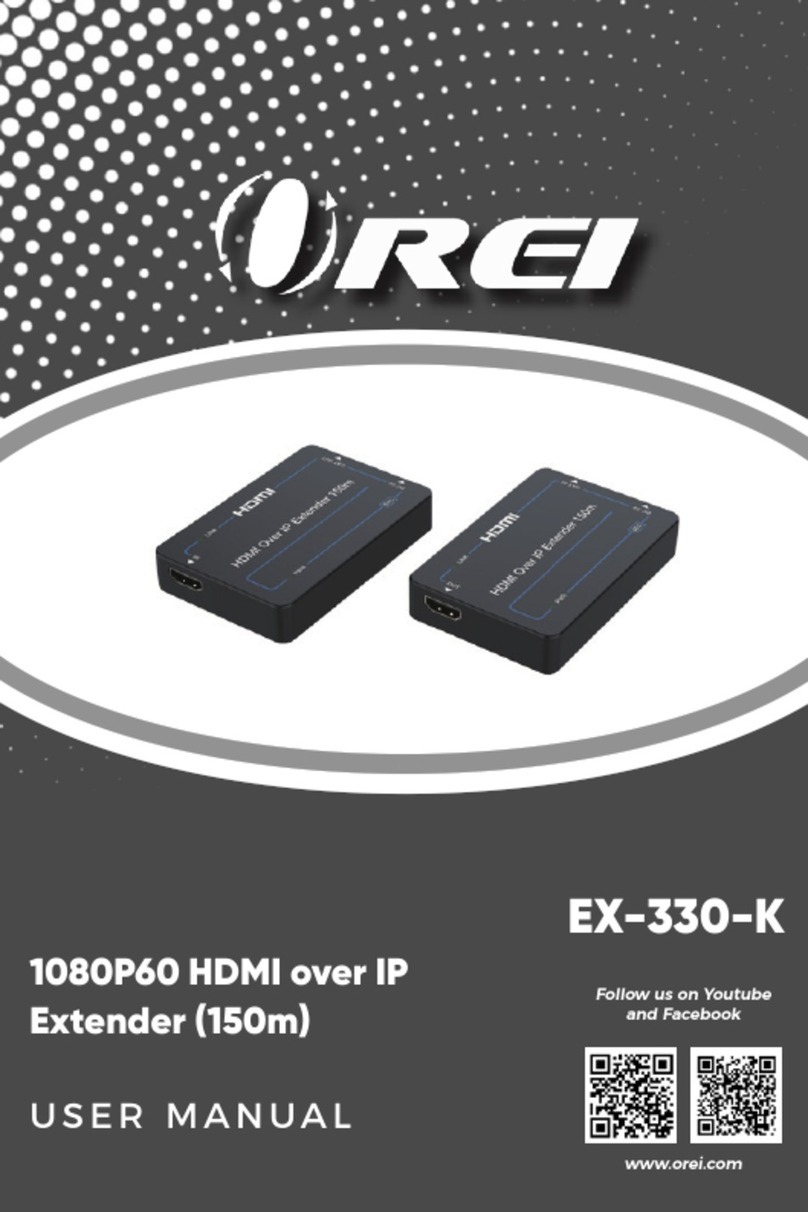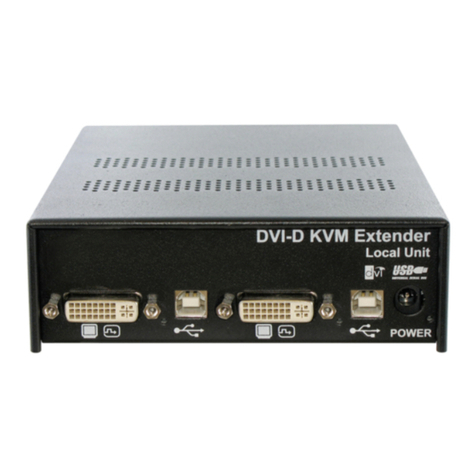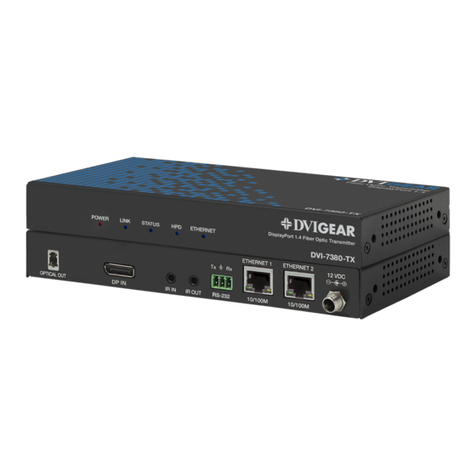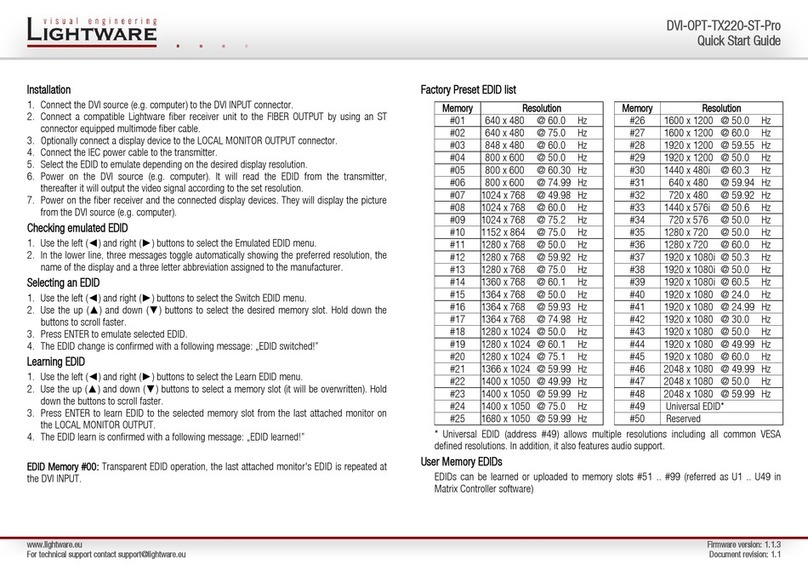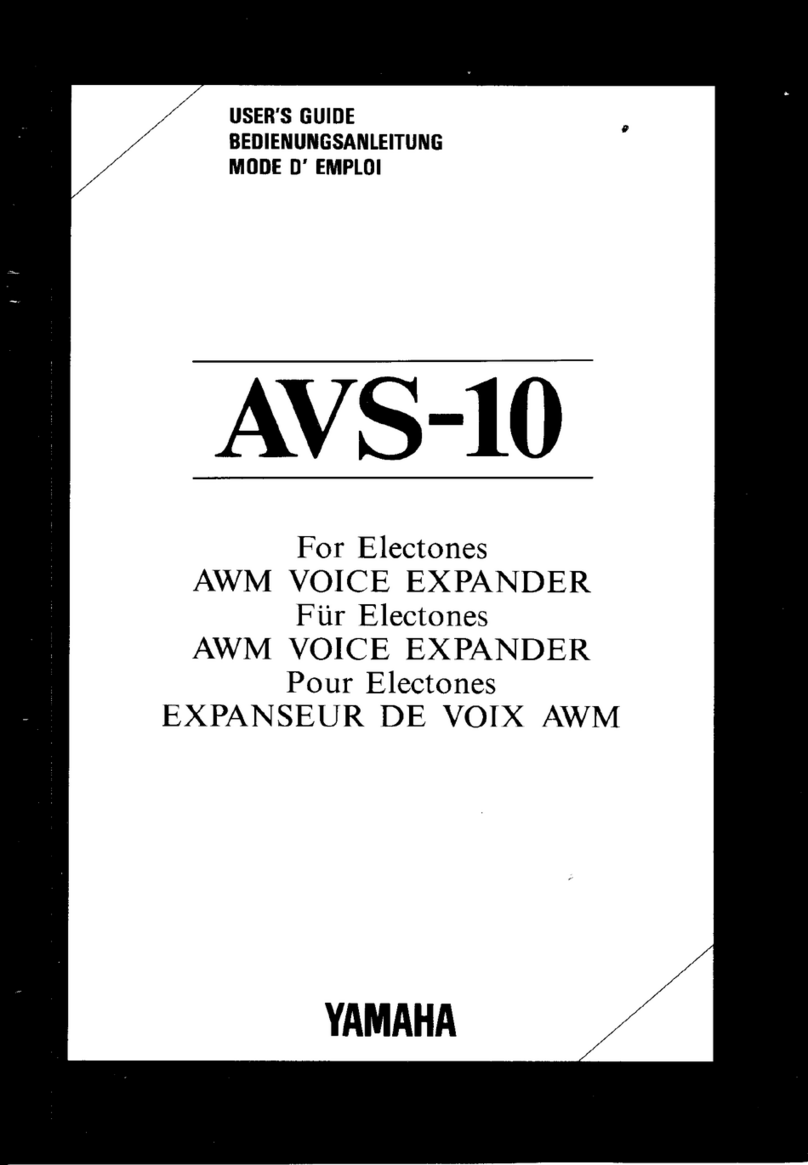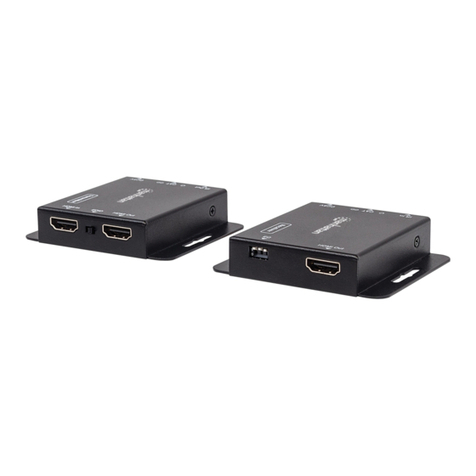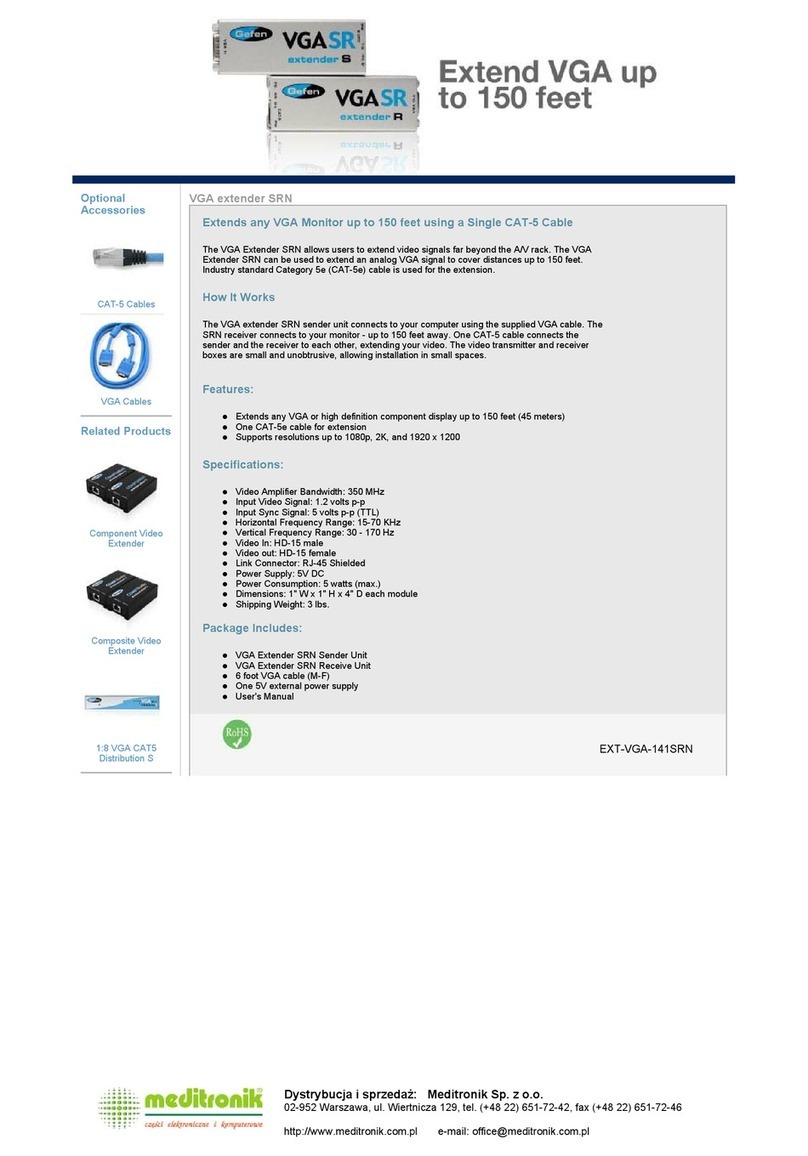EDT RCX C-Link series User manual

User’s Guide
RCX C-Link Series:
Remote Camera Link Extenders
for use with Camera Link cameras
Doc. 008-02368-03d
Rev. 2011 June 29

EDT, Inc. ii
Engineering Design Team (EDT), Inc.
1400 NW Compton Drive, Suite 315
Beaverton, OR 97006
p 503-690-1234 / 800-435-4320
f 503-690-1243
www.edt.com
EDTTM and Engineering Design TeamTM are trademarks of Engineering Design Team, Inc. All other trademarks, service marks,
and copyrights are the property of their respective owners†.
© 1997-2011 Engineering Design Team, Inc. All rights reserved.

EDT, Inc. iii
Terms of Use Agreement
Definitions. This agreement, between Engineering Design Team, Inc. (“Seller”) and the user or distributor (“Buyer”), covers the
use and distribution of the following items provided by Seller: a) the binary and all provided source code for any and all device
drivers, software libraries, utilities, and example applications (collectively, “Software”); b) the binary and all provided source code
foranyand all configurable or programmable devices(collectively, “Firmware”); and c) the computer boardsandallotherphysical
components (collectively, “Hardware”). Software, Firmware, and Hardware are collectively referred to as “Products.” This
agreementalso covers Seller’s published Limited Warranty(“Warranty”) and all other published manuals and product information
in physical, electronic, or any other form (“Documentation”).
License. Seller grants Buyer the right to use or distribute Seller’s Software and Firmware Products solely to enable Seller’s
Hardware Products. Seller’s Softwareand Firmware mustbeused on the same computer as Seller’s Hardware. Seller’s Products
and Documentation are furnished under, and may be used only in accordance with, the terms of this agreement. By using or
distributing Seller’s Products and Documentation, Buyer agrees to the terms of this agreement, as well as any additional
agreements (such as a nondisclosure agreement) between Buyer and Seller.
Export Restrictions. Buyer will not permit Seller’s Software, Firmware, or Hardware to be sent to, or used in, any other country
except in compliance with applicable U.S. laws and regulations. For clarification or advice on such laws and regulations, Buyer
should contact: U.S. Department of Commerce, Export Division, Washington, D.C., 20230, U.S.A.
Limitation of Rights. Seller grants Buyer a royalty-free right to modify, reproduce, and distribute executable files using the
Seller’s Software and Firmware, provided that: a) the source code and executable files will be used only with Seller’s Hardware;
b)Buyeragrees to indemnify, hold harmless, and defendSeller fromand against any claims or lawsuits, including attorneys’ fees,
that arise or result from the use or distribution of Buyer’s products containing Seller’s Products. Seller’s Hardware may not be
copied or recreated in any form or by any means without Seller’s express written consent.
No Liability for Consequential Damages. In no event will Seller, its directors, officers, employees, or agents be liable to Buyer
for any consequential, incidental, or indirect damages (including damages for business interruptions, loss of business profits or
information, and the like) arising out of the use or inability to use the Products, even if Seller has been advised of the possibility
of such damages. Because some jurisdictions do not allow the exclusion or limitation of liability for consequential or incidental
damages, the above limitations may not apply to Buyer. Seller’s liability to Buyer for actual damages for any cause whatsoever,
and regardless of the form of the action (whether in contract, product liability, tort including negligence, or otherwise) will be
limited to fifty U.S. dollars ($50.00).
Limited Hardware Warranty. Seller warrants that the Hardware it manufactures and sells shall be free of defects in materials
and workmanship for a period of 12 months from date of shipment to initial Buyer. This warranty does not apply to any product
that is misused, abused, repaired, or otherwise modified by Buyer or others. Seller’s sole obligation for breach of this warranty
shall be to repair or replace (F.O.B. Seller’s plant, Beaverton, Oregon, USA) any goods that are found to be non-conforming or
defective as specified by Buyer within 30 days of discovery of any defect. Buyer shall bear all installation and transportation
expenses, and all other incidental expenses and damages.
Limitation of Liability. In no event shall Seller be liable for any type of special consequential, incidental, or penal damages,
whether such damages arise from, or are a result of, breach of contract, warranty, tort (including negligence), strict liability, or
otherwise. All references to damages herein shall include, but not be limited to: loss of profit or revenue; loss of use of the goods
or associated equipment; costs of substitute goods, equipment, or facilities; downtime costs; or claims for damages. Seller shall
not be liable for any loss, claim, expense, or damage caused by, contributed to, or arising out of the acts or omissions of Buyer,
whether negligent or otherwise.
No Other Warranties. Seller makes no other warranties, express or implied, including without limitation the implied warranties
of merchantability and fitness for a particular purpose, regarding Seller’s Products or Documentation. Seller does not warrant,
guarantee, or make any representations regarding the use or the results of the use of the Products or Documentation or their
correctness, accuracy, reliability, currentness, or otherwise. All risk related to the results and performance of the Products and
Documentation is assumed by Buyer. The exclusion of implied warranties is not permitted by some jurisdictions. The above
exclusion may not apply to Buyer.
Disclaimer. Seller’s Products and Documentation,including this document, are subject to change without notice. Documentation
does not represent a commitment from Seller.

EDT, Inc. iv
Contents
RCX C-Link Series: Remote Camera Link Extenders
Overview...................................................................................................................................................... 1
Care and Cautions.......................................................................................................................... 1
Related Resources.......................................................................................................................... 2
Connecting the Extender Assembly............................................................................................................. 3
Mounting the Extender.................................................................................................................... 4
Base Mode...................................................................................................................................... 4
With a standard framegrabber ........................................................................................... 4
With a FOX framegrabber.................................................................................................. 5
Medium or Full Mode ...................................................................................................................... 5
With a standard framegrabber ........................................................................................... 6
With a FOX framegrabber.................................................................................................. 7
Eighty-bit packing............................................................................................................... 7
The LED....................................................................................................................................................... 7
Configuration and LED Configuration Codes............................................................................................... 7
Base Mode...................................................................................................................................... 8
Medium or Full Mode ...................................................................................................................... 9
Resetting or Changing the Operating Mode.................................................................................... 9
Backward Compatibility................................................................................................................. 10
Status and LED Status Codes ................................................................................................................... 11
Firmware.................................................................................................................................................... 12
Versions........................................................................................................................................ 12
Querying, Verifying, and Updating................................................................................................ 12
Transceivers............................................................................................................................................... 14
Coaxial Cable............................................................................................................................................. 14
Pinouts....................................................................................................................................................... 15
Camera Link.................................................................................................................................. 15
Power............................................................................................................................................ 16
Cable assembly – Lemo to loose wire ............................................................................. 16
Cable assembly – Lemo to male DB9.............................................................................. 16
Cable assembly – Lemo to female DB9 RS232............................................................... 17
Cable assembly – Lemo resync....................................................................................... 18
Power Supply............................................................................................................................................. 18
Dimensions ................................................................................................................................................ 20
Appendix................................................................................................................................................................. 21
Alternative Mounting and Connecting Methods ......................................................................................... 21
Mounting Holes............................................................................................................................. 21
Adapter Cabling ............................................................................................................................ 21
Revision Log ........................................................................................................................................................... 22

EDT, Inc. 1
RCX C-Link Series: Remote Camera Link
Extenders
Overview
EDT’sRCX-seriesremoteCameraLink extendersarecompact modules thatcan be usedto extend Camera
Link data over fiberoptic or coaxial cabling. All components work just as they do with Camera Link cabling.
This guide covers the following extenders: the RCX C-Link, which works with fiberoptic cable; and the RCX
C-Link Coax2, which works with coaxial cable. Thus, for simplicity, this guide will refer to them as follows:
• RCX C-Link Fiber extender
• RCX C-Link Coax2 Coax extender
Two extenders can link a camera to a standard framegrabber via fiber or coaxial cable; or one extender can
connect a camera to an EDT FOX framegrabber, which has fiberoptic transceivers built in.
Specially configured pairs are available for medium or full mode operation (fiber version only).
NOTE All EDT extenders and framegrabbers mentioned in this guide are for Camera Link. For details on our
legacy AIA product, RCX LVDS / RS422, see its product page at www.edt.com.
Care and Cautions
Your EDT extender is built to withstand a variety of extreme conditions, as listed in the specifications on its
datasheet (see Related Resources on page 2). However, it is nonetheless a high-performance component
which, for optimal results, should be treated with care, as detailed below.
• The extender must be protected from even momentary power spikes over 18 volts.
• The connectors –especially the fiberoptic transceivers –must be kept clean and dry. If you suspect the
presence of moisture or debris in the connectors, you should blast a burst of compressed air:
— directly into the ports to dislodge any debris that has collected there; and
— away from the electronic components to blow out any moisture that has collected in the air nozzle.
CAUTION To avoid damaging your eyesight, never look directly into any transceiver.

RCX C-Link Series Overview
EDT, Inc. 2011 June 29 2
Related Resources
The resources below may be helpful or necessary for your applications.
• To find complete EDT information on any EDT product, go to www.edt.com and find the appropriate
product page. That page will provide links to the product’s datasheet specifications and user’s guide.
• To find EDT information that is not related to a specific EDT product (for example, installation packages
or cable pinouts for multiple products), go to www.edt.com and look in Product Documentation.
EDT Resource Detail Web link
• Application programming interface HTML and PDF versions www.edt.com/manuals.html
• Installation packages Software / firmware www.edt.com/software.html
• Specifications for EDT products Datasheets www.edt.com (find by product name)
• Documentation for EDT products User’s guides " (Product Documentation page)
• Cabling and pinout documentation Details on cabling and pinouts " (Product Documentation page)
Standard/Specification For From Web link
• PCI / PCIe PCI / PCIe bus PCI Special Interest Group
(PCI SIG) www.pcisig.com
• Camera Link Camera Link Machine Vision Online (MVO) www.machinevisiononline.org
• IRIG-B IRIG-B timestamping Inter Range Instrumentation
Group mod B irigb.com

RCX C-Link Series Connecting the Extender Assembly
EDT, Inc. 2011 June 29 3
Connecting the Extender Assembly
Each extender unit is factory-preset and labeled to connect to either a camera or a framegrabber (Figure 1).
Each unit, in order to work properly, must be connected to the device for which it was preset and labeled.
NOTE If you reconfigure your extender for a different device, relabel the extender to avoid future confusion.
Figure 1. Fiberoptic extender, labeled with factory presets
Once you have checked the labeling, you can connect each extender as explained below.
• Device end: Attach the correct device (camera or framegrabber) to the extender’s MDR26 connector.
• Cable end: Attach the correct cable to the extender’s cable connectors.
Figure 2 shows the extender connectors and other features, including the LED (see The LED on page 7).
Figure 2. Connectors and features on EDT extenders
This label shows the unit’s factory presets, including:
• the end for which the unit was preset (camera end
or framegrabber end);
• the operating mode for which the unit was preset
(see Configuration and LED Configuration Codes
on page 7).
Device end of an extender An extender connected to a camera
Cable end of a fiberoptic extender Cable end of a coaxial extender
MDR26
power supply connector
thumbscrews
LC duplex fiberoptic
connector:
transmit
receive
LED
SMA coaxial
connectors:
transmit
receive
power supply connector
LED

RCX C-Link Series Connecting the Extender Assembly
EDT, Inc. 2011 June 29 4
Mounting the Extender
To mount an extender, use the thumbscrews or one of the alternative methods detailed in Alternative
Mounting and Connecting Methods on page 21. To mount a coax extender, you must use one of those
alternative methods.
Base Mode
For this setup, you’ll need two extenders (one at the camera end and one at the framegrabber end) or, if
you use an EDT FOX framegrabber, just one extender (at the camera end).
In base mode, each pixel clock transfers 24 bits of video data from the camera’s X channel. The extender
can transfer four camera control signals and has a bidirectional serial interface between framegrabber and
camera.
NOTE The extendergenerates its own pixel clock, so the clock rate into the framegrabber may exceed the rate
of the camera. Thus, the amount of time spent in blanking will vary from line to line and frame to frame.
With a standard framegrabber
For a base-mode system with a standard framegrabber, you will need two extenders: one at the camera
end and one at the framegrabber end (see Figure 3).
Figure 3. Base mode: multiple extenders + standard framegrabber
To set up this system:
1. Install the framegrabber according to its user’s guide (for EDT user’s guides, see Related Resources
on page 2).
2. Verify the extenders are configured properly (see Configuration and LED Configuration Codes on
page 7) – one for the camera end, and the other for the framegrabber end.
3. Turn off power to all devices.
4. Connect the extender labeled “Camera End” to the MDR26 connector on the camera (see Figure 2).
5. Connect the extender labeled “Framegrabber End” to the MDR26 connector on the framegrabber.
6. Connect the two extenders to each other with the appropriate fiberoptic or coaxial cable.
7. Connect the power supply to the power connector on the back of the extender.
8. Turn on power to all devices.
9. Verify each LED shows a steady light (see Status and LED Status Codes on page 11).

RCX C-Link Series Connecting the Extender Assembly
EDT, Inc. 2011 June 29 5
With a FOX framegrabber
AFOX framegrabber hasfiberoptics built in,so a base-modesystem witha FOXframegrabberrequiresonly
one extender per camera (see Figure 4).
Figure 4. Base mode: one extender + FOX framegrabber
To set up this system:
1. Install the framegrabber according to its EDT user’s guide (see Related Resources on page 2).
2. Verify the extender is configured properly (see Configuration and LED Configuration Codes on page 7).
3. Turn off power to all devices.
4. Connect the extender to the MDR26 connector on the camera (see Figure 2).
5. Connect the extender to the desired transceiver on the framegrabber (channel 0 is the transceiver phys-
ically closest to the PCI bus) with fiberoptic cable.
6. Connect the power supply to the power connector on the back of the extender.
7. Turn on power to all devices.
8. Verify each LED shows a steady light (see Status and LED Status Codes on page 11).
Medium or Full Mode
A medium- or full-mode system requires multiple extenders, as explained below.
On a medium- or full-mode Camera Link camera, there are two MDR26 connectors.
•Theprimary connector operates the same way as the base-mode interface: each pixel clock transfers
24 bits of video data from the camera’s X channel. The primary connector also can transfer four camera
control signals, and it has a bidirectional serial interface between framegrabber and camera.
•Thesecondary connector transfers video data for the Y and Z channels:
— Medium-mode cameras transfer 24 bits of video data for the Y channel.
— Full-mode cameras transfer an additional 24 bits for the Z channel.
Thus, the standard full-mode configuration transfers 72 bits of video data — 24 bits each for the X, Y, and
Z camera channels.
The X-channel extenders (one at the camera end and one at the framegrabber end) operate as a base-
mode extension cord, with one fiber for video data from camera to framegrabber, and the other for control
signals from framegrabber to camera. The YZ-channel extender at the camera end has two fiberoptic
transmitters, with both fibers carrying video data to the framegrabber.
Many framegrabbers require that the video data presented at the primary and secondary connectors must
be synchronized to within a fraction of a pixel clock. The section entitled Cable assembly – Lemo resync on
page 18 describes a common pixel clock for both extenders at the framegrabber end, and other

RCX C-Link Series Connecting the Extender Assembly
EDT, Inc. 2011 June 29 6
synchronizingsignals to ensure thatthe startingpixel ofeach rasterlines upacross theX, Y andZ channels.
The resync cable also supplies power to the extenders.
CAUTION To avoid damaging your components, you should verify that the entire system is connected properly
before you apply power to any component. In particular, do not apply power to the resync cable while
you are connecting it to, or disconnecting it from, an extender.
With a standard framegrabber
For medium- or full-mode operation with a standard framegrabber, you will need four extenders: two at the
camera end, and two at the framegrabber end (see Figure 5).
NOTE Eachextender unitis physicallydifferent fromthe others,so youcannotsimply change theconfiguration
codes and use the units interchangeably.
Figure 5. Full mode: multiple extenders + standard framegrabber
To set up this system:
1. Install your Camera Link framegrabber and software as instructed by its manufacturer.
2. Verify extenders are configured properly (see Configuration and LED Configuration Codes on page 7).
3. Turn off power to all devices.
4. Connect the extender labeled X Channel Camera to the camera's primary MDR26 connector.
5. Connect the extender labeled YZ Channel Camera to the camera’s secondary MDR26 connector.
6. Connect the extender labeled X Channel FG to the framegrabber’s primary MDR26 connector.
7. Connect the extender labeled YZ Channel FG to the framegrabber’s secondary MDR26 connector.
8. Connect the two power supplies with coaxial power connectors to the two camera-end extenders.
9. Verify that you have the correct resync cable for your camera (see Figure 5) and connect the cable to
both extenders at the framegrabber end. The two ends of the resync cable are interchangeable.
10. Connect the power supply with the 9-pin D-shell connector to the resync cable connector.

RCX C-Link Series The LED
EDT, Inc. 2011 June 29 7
11. Connect an LC duplex fiber from the X-channel extender at the camera end to the X-channel extender
at the framegrabber end.
12. Connect an LC duplexfiber from the YZ-channel extenderat the camera end to the YZ-channel extend-
er at the framegrabber end.
13. Turn on power to all devices.
14. Verify each LED shows a steady light (see Status and LED Status Codes on page 11).
With a FOX framegrabber
A FOX framegrabber for medium and full mode is currently in development.
Eighty-bit packing
Certain full-mode cameras, such as the Basler A04k and Mikrotron MC1310 and MC1311, will reassign the
Spare, Data-valid, and Frame-valid control signals to allow a transferof up to 80 bits of data per pixel clock.
Your extender can be configured with a configuration code to accommodate these cameras. Configuration
codes of 1-5 (at the camera end) and 2-5 (at the framegrabber end) allow 80-bit packing at frequencies of
60–72 MHz. The 72 MHz upper limit is determined by the bandwidth available over the fiber, but is sufficient
to support all modes currently available on the cameras specified above.
The LED
Eachextenderhas a light-emittingdiode(LED), asin Figure 2.Bydisplayingvariouspatternsof blinks(blink
codes), the LED communicates information about the extender’s configuration and status, as follows.
At power-on, the LED blinks a configuration code (indicating the operating mode for which the extender is
configured) one time, and then blinks rapidly as the firmware loads. After power-on, the LED continuously
displays a status code (indicating whether the unit is working properly or has errors). The LED also is used
when resetting or changing the operating mode.
The two types of LED codes are explained more fully in Configuration and LED Configuration Codes on
page 7 and Status and LED Status Codes on page 11.
Configuration and LED Configuration Codes
Your EDT extender can support a wide range of camera models and data transfer rates, depending on the
extender model and operating mode selected. For fiber extenders, standard firmware will support most
base-modecamerasfrom 20 to80 MHz, with UARTdatarates of upto 19.2KBaud, and full-modeoperation
at 60–80 MHz. For coax extenders, standard firmware will support most base-mode cameras from 20 to 60
MHz, with UART data rates of up to 19.2 KBaud.
Each extender is factory-preset for the operating mode that was specified in the product order. The
operating mode is selected and indicated through LED configuration codes, as explained below.
Each extender is configured for the desired operating mode through a pattern of blinks called the LED
configuration code. This code, displayed once at power-on, consists of two digits, each represented by a
certain number of blinks. The two digits are separated by a pause, shown in this guide as a hyphen. For
example, a configuration code of “one blink, pause, one blink” is shown in this guide as 1-1.

RCX C-Link Series Configuration and LED Configuration Codes
EDT, Inc. 2011 June 29 8
A first digit of 1 indicates that the unit is configured for the camera end; a first digit of 2 indicates that the unit
is configured for the framegrabber end. The second digit must be the same for both ends (camera and
framegrabber). With a FOX framegrabber, there is no extender at the framegrabber end, so the
configuration code is set at the camera end only.
For a typical base-mode system, a configuration code of 1-1 at the camera endand 2-1 at the framegrabber
end permits standard base-mode operation at clock frequencies of 20–40 MHz. For a typical full mode
system, a configuration code of 1-4 on both extenders at the camera end, and a configuration code of 2-4
on both at the framegrabber end, allows standard full-mode operation at clock frequencies of 60–80 MHz.
On the configuration code label for a medium- or full-mode system, X Channel refers to the primary MDR26
connnector on the camera or framegrabber, and YZ Channel refers to the secondary connector.
Base Mode
Table 1 shows the operating modes of an extender in base mode (EDT firmware revsion 11 or higher).
Cameras operating between 40 and 60 MHz are usually best served by configuration codes 1-3 and 2-3. If
the camera needs only 16 data bits or fewer transferred per clock cycle (instead of all 24), it is possible to
use configuration codes 1-2 and 2-2 instead, and thus operate the link at 1.25 GBaud for longer range and
lower power dissipation. The selection of 16-bit mode is made only at the framegrabber end through
configuration code 2-2, or through the directive mode16: 1 in a FOX configuration file; this information is
communicated over the fiber to the extender at the camera end. (At the camera end, configuration codes
1-1 and 1-2 are identical.)
At reset (and whenever the extender cannot lock to the camera clock), the extender initializes to assume
that the Camera Link Data-Valid signalis never asserted,and ignoresit. Many Pulnix camerasdo not assert
Data-Valid, so this behavior is useful for those using such cameras. The first occurrence of Data-Valid true
from the camera causes the extender to use Data-Valid to qualify video data from that point on.
In the case of a dual-tap camera, the Camera Link pixel clock is half the camera’s pixel rate. For example,
a dual-tap 12-bit camera with a 40 MHz Camera Link clock sends 80 million pixels per second. This camera
is compatible with the extender in configuration code 1-1.
Table 1. LED configuration codes – base mode
Code End Camera Clock Rate Constraints Link Rate Extender Type
1-1 camera 20–40 MHz 24 bits 1.25 GBaud Fiber & coax
1-2 camera 20–60 MHz 16 bits 1.25 GBaud Fiber & coax
1-3 camera 20–60 MHz 24 bits 2.5 GBaud Fiber only
1-4 camera 60–80 MHz 24 bits 2.5 GBaud Fiber only
2-1 framegrabber 40 MHz 24 bits 1.25 GBaud Fiber & coax
2-2 framegrabber 60 MHz 16 bits 1.25 GBaud Fiber & coax
2-3 framegrabber 60 MHz 24 bits 2.5 GBaud Fiber & coax
2-4 framegrabber 80 MHz 24 bits 2.5 GBaud Fiber only
3-3 firmware update (see Firmware on page 12) 1.25 GBaud Fiber & coax
2 fast, 2 slow, 2 fast Error: unsupported configuration code entered

RCX C-Link Series Configuration and LED Configuration Codes
EDT, Inc. 2011 June 29 9
Medium or Full Mode
Table 2 shows the operating modes of an extender in medium or full mode (EDT firmware rev. 11 or higher).
NOTE This table is for the fiberoptic extender only, as the coaxial extender is available for base mode only.
For full-mode cameras, which typically operate at 60 to 80 MHz, configuration codes of 1-4 (camera end)
and 2-4 (framegrabber end) should work. For full-mode cameras that transfer 80 bits per clock cycle, use
configuration codes of 1-5 (camera end) and 2-5 (framegrabber end).
For medium-mode cameras, which typically operate at 40 MHz, configuration codes of 1-1 (camera end)
and 2-1 (framegrabber end) should work.
For instructions on verifying and updating the firmware, see Firmware on page 12.
Resetting or Changing the Operating Mode
Your extender is factory-preset for the operating mode that was specified in the product order. However, if
you need to reset or change the operating mode, you can do so by setting the LED configuration code.
NOTE If you change the operating mode, be sure to relabel the extender to prevent future confusion.
To reset or change the operating mode (configuration code):
1. Turn off the power to the extender, and disconnect the extender from everything except a power supply.
NOTE EDT recommends connecting the power supply to a power strip or some other device that allows easy
access to both the power and the extender at the same time. This is because, as you follow the steps
below, it may become necessary to turn off the power and restart the process (see step 4).
2. Press the recessed button on the bottom of the extender with a fine, blunt point – such as the tip of a
ballpoint pen – as in Figure 6.
Table 2. LED configuration codes – medium or full mode
Code End Camera Clock Rate Constraints Link Rate
1-1 camera 20–40 MHz 72 bits 1.25 GBaud
1-2 [undefined] – – –
1-3 camera 20–60 MHz 72 bits 2.5 GBaud
1-4 camera 60–80 MHz 72 bits 2.5 GBaud
1-5 camera 60–72 MHz for 80-bit full-mode cameras 2.5 GBaud
2-1 framegrabber 20–40 MHz* 72 bits 1.25 GBaud
2-2 [undefined] – – –
2-3 framegrabber 20–60 MHz* 72 bits 2.5 GBaud
2-4 framegrabber 60–80 MHz* 72 bits 2.5 GBaud
2-5 framegrabber 60–72 MHz* for 80-bit full-mode cameras 2.5 GBaud
3-3 firmware update (see Firmware on page 12) 1.25 GBaud
2 fast, 2 slow, 2 fast Error: unsupported configuration code entered
* For camera clock rate, the resync cable determines the actual frequency.

RCX C-Link Series Configuration and LED Configuration Codes
EDT, Inc. 2011 June 29 10
Figure 6. Pressing the recessed button
3. Still pressing the button, turn on the power; the LED will turn on.
4. Release the button within two seconds (if you press the button longer than two seconds, the LED will
start blinking diagnostically and you will need to restart the process from step 1).
5. Release the button; the LED will turn off.
NOTE Before proceeding, be sure you know which configuration code you want (see Configuration and LED
Configuration Codes on page 7), because you’ll need to enter it quickly when the LED starts blinking.
6. Press the button, let the LED start blinking, and release the button after the correct number of blinks for
the first digit; then repeat for the second digit. For example, for a configuration code of 2-1, press the
button for two blinks, and release; then press the button for one blink, and release.
Assoon asyou enterthe second digit,the extendersavesyour selectioninto flashmemory andthe LED
starts blinking in that pattern. If the pattern is not what you wanted, start over from Step 1.
NOTE If an unsupported code is entered, the LED will display two fast, two slow, and two fast blinks, indicating
that an error has occurred and the code has not been saved to memory.
7. Cycle power to the extender without pressing the button.
When the extender is powered on without the button pressed, the LED blinks the configuration code once
and blinks rapidly as the firmware loads; thenit continuously displays the extender’s status (see Status and
LED Status Codes on page 11).
Backward Compatibility
For details on backward compatibility, see Firmware on page 12.

RCX C-Link Series Status and LED Status Codes
EDT, Inc. 2011 June 29 11
Status and LED Status Codes
As previously discussed, at power-on the LED blinks the extender’s configuration code one time, and then
blinks rapidly as the firmware loads. After power-on, the LED continuously displays the extender’s status
code, which indicates whether the unit is working properly or has errors (see Table 3).
Table 3. LED status codes
If LED shows... It means...
Steady light All OK – everything is working properly.
Slow blinks
(1Hz) There is an error from the other end. The typical causes are:
• The extender at the other end has no power, or its operating mode does not match the operating
mode on this extender (see Configuration and LED Configuration Codes on page 7).
• The cable connection is compromised, either by incorrect or damaged cabling, or by moisture or
debris in the extender’s cable connectors (see Care and Cautions on page 1).
Fast blinks
(10Hz) There is an error from the camera to the extender, related to the camera’s pixel clock.
If the fast blink is on the camera-end extender: either the camera has no power, or the operating
mode on the extender does not match the operating mode on the camera (see Configuration and
LED Configuration Codes on page 7).
If the fast blink is on the framegrabber-end extender: either the extender or the resync cable is faulty.
Both slow and
fast blinks There is at least one slow-blink error and at least one fast-blink error.
2 fast + 2 slow +
2 fast blinks The extender is configured with an unsupported operating mode (see Configuration and LED
Configuration Codes on page 7).
No light The extender has no power or is faulty.

RCX C-Link Series Firmware
EDT, Inc. 2011 June 29 12
Firmware
To avoid version problems, EDT recommends against doing a firmware update unless you are convinced it
is necessary. If it is necessary, you can use the utility rcxload to query the firmware, verify it against a
provided firmware file, and update the firmware.
Versions
EDT extenders are factory-preset with the files shown in Table 4.
If your extender unit is using standard firmware older than revision 11, the unit will support camera speeds
of only 20–40 MHz at 1.25 GBaud, using a configuration code of 1-1 (ignore Data-Valid), 1-2 (use Data-
Valid), or 2-1 (framegrabber end).
For backward compatibility, firmware revisions of 11 or later will behave identically for configuration codes
1-1 and 1-2. As of firmware revision 11, Data-Valid is automatically detected. If you use configuration code
2-2 at the framegrabber end for 16-bit mode, you can use the corresponding configuration code of 1-2 at
the camera end.
NOTE To determine whether your firmware is revision 11 or later, you can enter configuration code 3-5 (see
Configuration and LED Configuration Codes on page 7). If the LED then blinks two fast, two slow, two
fast (indicating an unsupported configuration code), then you have firmware of revision 11 or later.
Querying, Verifying, and Updating
For base or medium mode, follow the steps below to query, verify, and update the firmware.
NOTE Thisprocedureworksonly if youare usingEDT FOXor PCI Expressframegrabbersand fiberextenders
in base or medium mode. If you are using anything else, contact EDT to update the firmware.
CAUTION To avoid corrupting the firmware on the extender, do not interrupt the update by pressing Ctrl-C or
turning off the power while the update is in progress.
1. Set up your system as instructed in this guide (see Connecting the Extender Assembly on page 3).
2. Run pciload with no arguments to ensure that the system recognizes the EDT framegrabber. Typical
output appears thus:
pdv unit 0 (pci dv fox):
XC2S200 PCI FPGA, AMD 29LV081B 8MB FPROM
s/n AP0064, p/n 019-02103-11, i/f fpga xc2s400e, rev 11 clock 40 Mhz, opt f2
Sector 0
Sector 1
Sector 2 PROM id: <dvtlk4_3v.ncd 2s200fg456 2005/06/10 14:58:10>
Sector 3 PROM id: <dvtlk4_5v.ncd 2s200fg456 2005/06/10 14:58:16>
3. Configure the extender with code 3-3 (see Configuration and LED Configuration Codes on page 7).
Table 4. FPGA configuration files for RCX-series extenders (as of February 2009)
Operating mode Channel FPGA configuration file
Base [no channels] rgb11.rcx
Medium Xmx11.rcx
YZ my11.rcx
Full Xfx11.rcx
YZ fyz11.rcx

RCX C-Link Series Firmware
EDT, Inc. 2011 June 29 13
4. Power-cycle the extender.
5. Ifyou are usinga FOX framegrabber,ensurethe fiberopticcable is connectedto channel 0 (thechannel
physically closest to the PCI bus). The extender need not be connected to a camera.
6. Query the extender, to ensure it is there and recognized, by entering rcxload with no arguments. After
you start rcxload, the LEDs on both devices will be lighted and not blinking.
Typical output appears thus:
pdv unit 0 (pci dv fox) chan. 0 RCX module:
sector 0 [10000]: <rgb11cm60_a01.ncd 2vp2fg256 2006/03/30 20:05:34>
sector 1 [38000]: <rgb11cm80_a01.ncd 2vp2fg256 2006/03/30 20:12:36>
sector 2 [60000]: <rgb11fg40_a01.ncd 2vp2fg256 2006/03/30 19:57:41>
sector 3 [88000]: <rgb11fg60_a01.ncd 2vp2fg256 2006/03/30 20:02:08>
sector 4 [b0000]: <rgb11fg80_a01.ncd 2vp2fg256 2006/03/30 20:09:30>
sector 5 [d8000]: <fud02b.ncd 2vp2fg256 2006/03/28 15:59:19>
If your output appears faulty, check the configuration code, cables, and connections. If you still have
7. Assuming correct output from step 6 above, you can perform either or both of the following operations.
— To verify (compare) the firmware in your EDT installation package against the firmware already
loaded on your extender via flash memory, run...
rcxload -u 0 -v flash/rcx/file.rcx
...replacing file.rcx with the filename of the current firmware revision. The utility compares the
firmware in the extender with the firmware in the specified firmware file. If they are the same, the
utility reports verified and 0 errors; if not, it reports not verified and lists the errors.
— To update the firmware, if you determine that an update is necessary, run...
rcxload -u 0 flash/rcx/file.rcx
...replacing file.rcx with the filename of the current firmware revision.
The filename must be a valid .rcx file. EDT software packages ship with the current .rcx files in the
flash/rcx subdirectory. The README file in the package has information about any .rcx file updates,
including the specific filename of the current revision.
After a successful update, configure the extender for the desired operating mode (see Configuration
and LED Configuration Codes on page 7).
NOTE If rcxload reports an error within a section flagged as “critical,” do not power-cycle the extender;
instead, repeat the procedure. If you still get errors, leave the extender powered on and contact EDT.
You can turn off the power to the computer and camera, and leave the extender powered on indefinitely.

RCX C-Link Series Transceivers
EDT, Inc. 2011 June 29 14
Transceivers
The fiberoptic extender supports various types of transceivers and fiber, as shown in Table 5.
Alternatively, the following transceivers are available as options.
• Single fiber transceivers (distances up to 60 km): These have an integrated passive optical multiplexer
and transmit data in each directionover one fiber using different colors of light – especially useful when
going through an optical rotary joint.
• CWDM transceivers (extended range of 5 km or more, 1310 nm, single-fiber PON) – These use up to
16 different colors of light, with the light split and combined by passive optical multiplexers that are ex-
ternal to the extender. They support up to twelve different cameras simultaneously over a single fiber.
• DualTX and DualRX transceivers – In full mode, these are used on the secondary Camera Link con-
nector because it must carry twice as much data as the primary connector.
Coaxial Cable
The coaxial extender has two SMA connectors –one for data in, and one for data out. The cable usedmust
have a corresponding SMA connector at each end.
The maximum range is determined by the dB of loss at 625 MHz. EDT recommends using a cable that
keeps the amount of loss under 20 dB at 625 MHz.
The cabling must have an impedance of 50 ohms.
One cable type that meets all of these requirements is 50-ohmRG58, which has an SMA connector at each
end and a typical loss of 11 to 15 dB per 100 feet.
Table 5. Transceiver + Fiber Combinations
Range Fiber Type Thickness
(microns) Wavelength Maximum length (meters)
at 1.25 GBaud at 2.5 GBaud
Standard Multi-mode fiber (MMF) 62.5 850 nm 300 150
50.0 850 nm 500 250
Extended Single-mode fiber (SMF) 9.0 1310 nm 10,000 5000

RCX C-Link Series Pinouts
EDT, Inc. 2011 June 29 15
Pinouts
This section provides pinout information for the Camera Link and power connectors.
Camera Link
Table 6 shows the MDR26 connector pinout for Camera Link signals (base, medium, and full mode).
Table 6. Pinout – MDR26 Connector
Camera
end Framegrabber
end Camera Link signal
base mode
(primary connector)
Camera Link signal
medium mode
(secondary connector)
Camera Link signal
full mode
(secondary connector)
1 1 inner shield inner shield inner shield
14 14 inner shield inner shield inner shield
225 X0– Y0– Y0–
15 12 X0+ Y0+ Y0+
324 X1– Y1– Y1–
16 11 X1+ Y1+ Y1+
423 X2– Y2– Y2–
17 10 X2+ Y2+ Y2+
522 Xclk– Yclk– Yclk–
18 9Xclk+ Yclk+ Yclk+
621 X3– Y3– Y3–
19 8X3+ Y3+ Y3+
720 SerTC+ unused 100 ohms
20 7SerTC– unused terminated
819 SerTFG– unused Z0–
21 6SerTFG+ unused Z0+
918 CC1– unused Z1–
22 5CC1+ unused Z1+
10 17 CC2+ unused Z2–
23 4CC2– unused Z2+
11 16 CC3– unused Zclk–
24 3CC3+ unused Zclk+
12 15 CC4+ unused Z3–
25 2CC4– unused Z3+
13 13 inner shield inner shield inner shield
26 26 inner shield inner shield inner shield

RCX C-Link Series Pinouts
EDT, Inc. 2011 June 29 16
Power
The power connector on the extender is either a standard coaxial Switchcraft or an optional Lemo. Pin
information for both is shown in Figure 7.
Figure 7. Pinout – Standard Switchcraft Connector and Optional Lemo Connector
With the Lemo, you can use various cables that allow auxiliary signals. (On medium- and full-mode systems
using the resync cable option, the extenders at the framegrabber end must use Lemo connectors.)
Cable assembly – Lemo to loose wire
The Lemo to loose wire (EDT part #016-02650) can be wired as needed or connected to various types of
connectors, depending on what you need for your application.
Cable assembly – Lemo to male DB9
The male DB9 (EDT part #016-02718) supports signals that can be used as an auxiliary signaling system
for a variety of purposes.
For example, custom firmware could allow the auxiliary signals to be used to control the camera’s pan and
servo motors. It is also possible to set up a hardware trigger that is local to either end. If you wishto explore
these options, contact EDT.
Unlike the DB9 in the female assembly, this DB9 has no looped-back signals or integrated level conversion.
Table 7. Pinout – Lemo to loose wire
Lemo
Pin
Color
Standard Firmware (rgb11.rcx)
Signal Level
Comments
1 green AUX_TX, primary auxiliary transmit UART CMOS +3.3 V
All five CMOS 3.3 V
signals go to FPGA I/O
3.3V pins using series
100-ohm resistors.
Custom firmware can be
used to configure these
pins as input or output.
2 red power to extender +4.75 to +18 V
3 orange AUX2_TX, secondary auxiliary transmit CMOS +3.3 V
4 brown AUX2_RX, secondary auxiliary receive CMOS +3.3 V
5 white SYNC, can be configured as an outgoing
copy of the camera’s frame-valid signal CMOS +3.3 V
6 blue AUX_RX, primary auxiliary receive UART CMOS +3.3 V
7 black ground ground
5
6
7
1
4
2
3
(Lemo)
1
(Switchcraft)
Pins 1, 3, 4, 5, and 6
(definedbyfirmwareused
in extender) typically are
used at CMOS +3.3 V
signal levels, although
pins 1,6 and 3,4 can be
configured as LVDS pairs.
Pin 2 is power to
extender (+4.75
to +18 V DC).
Key in connector
barrel (at top)
Pin 7 is ground
(for signals and power).
Outer ring is ground.
Pin 1 is power to
extender (+4.75
to +18 V DC).
Table of contents
Other EDT Extender manuals
